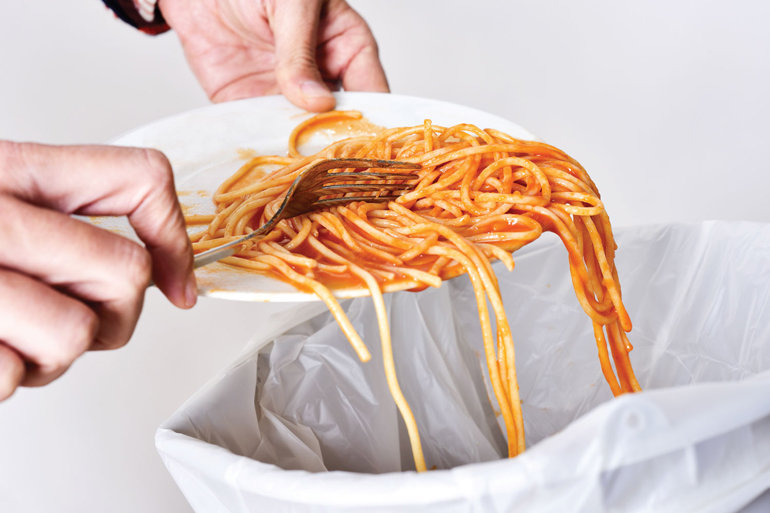A few cities are using leftovers to power buses and buildings.

Americans funnel 40 percent of it into the trash, and it’s the single biggest material in landfills. Food, about $640 worth per household per year, is simply thrown away by Americans who, according to a survey by the American Chemistry Council, don’t care how it impacts the environment.
But governments do. As food decomposes, it releases methane, a powerful greenhouse gas that contributes to global warming. To curb it, more and more cities are looking for ideas on how to divert food waste from landfills. They’re also testing out new ways to convert leftovers and other organic materials into biogas, a renewable energy that cities can use to run municipal fleets and produce electricity.
That’s what Philadelphia wants it for. Starting in January, the city mandated in-sink garbage disposals in all new construction. The idea is that residents will pulverize their food scraps into a slurry that will wind its way down the drain, through the city’s pipes and to its upgraded water resource recovery facility, where it will be processed into fertilizer products and biogas that will power the city’s wastewater treatment plants. In addition to energy savings, the city estimates that, thanks to fewer trips to the landfill, it will save about $3 million a year in trucking costs.
From our partners:
Requiring in-sink disposals in new construction dates back to the suburban boom of the 1950s, when several cities, such as Detroit, Indianapolis and those in the West, wrote them into their building codes. But, says Kendall Christiansen, a former senior consultant to the company InSinkErator, “Philadelphia’s code adoption is, in my estimation, the first in a potential new wave of interest sparked by recent demonstration projects in six cities and enabled by a paradigm shift from wastewater to water resource recovery [practices].”
Indeed, in-sink garbage disposals were installed in 175 homes in two Philadelphia neighborhoods as part of a pilot project conducted between 2012 and 2013. The program reduced food waste from those homes by an average of 35 percent. Philadelphia is targeting 10 percent of its residential waste with the new requirement.
It’s an attractive idea for cities struggling to get their residents to recycle, let alone compost. What could be easier than grinding up food waste and flushing it down the drain? After all, less rotting food means fewer stinky piles of trash and the inherent vermin they attract. Unfortunately, critics say, there’s no such thing as a sustainable garbage disposal. They argue that the convenience of disposals leads people to carelessly pulverize things they shouldn’t, like greasy leftovers. The disposals also use a lot of water: The average household uses 700 gallons per year just to flush the food down the drain. And the technology that converts food waste into biogas or fertilizer can be prohibitively expensive. Philadelphia invested $50 million to upgrade its anaerobic digesters, where biogas is produced by the breakdown of organic matter in the absence of oxygen. Washington, D.C., spent about $400 million to install four new digesters at its wastewater treatment facility in 2014.
What’s more, for biogas to be most effective, “you really need to make sure you are getting the same amount and type of organic material because the bacteria used to break down the organics in the digester can be a little fickle,” says Amanda Bilek, government affairs and communications director at the Great Plains Institute, a green energy think tank. Digesters become less efficient or don’t work, she says, if you start adding in different types of organic material. That’s a concern with in-sink disposals since officials can’t control what residents put down their drains day in and out.
But Bilek is a proponent of biogas in general. “One thing that is great about it and that sets it apart from other types of renewable energies is that as long as you have a stable and constant supply of feedstock,” she says, “you have a very flexible and reliable and consistent source of renewable energy.”
She points to San Jose, Calif., as an example of an effective biogas project. The city collects food waste from restaurants and commercial businesses, processes it in 16 anaerobic digesters until methane is produced and then, in turn, uses it to power the facility and create fuel for city vehicles.
This feature originally appeared in Governing.


















